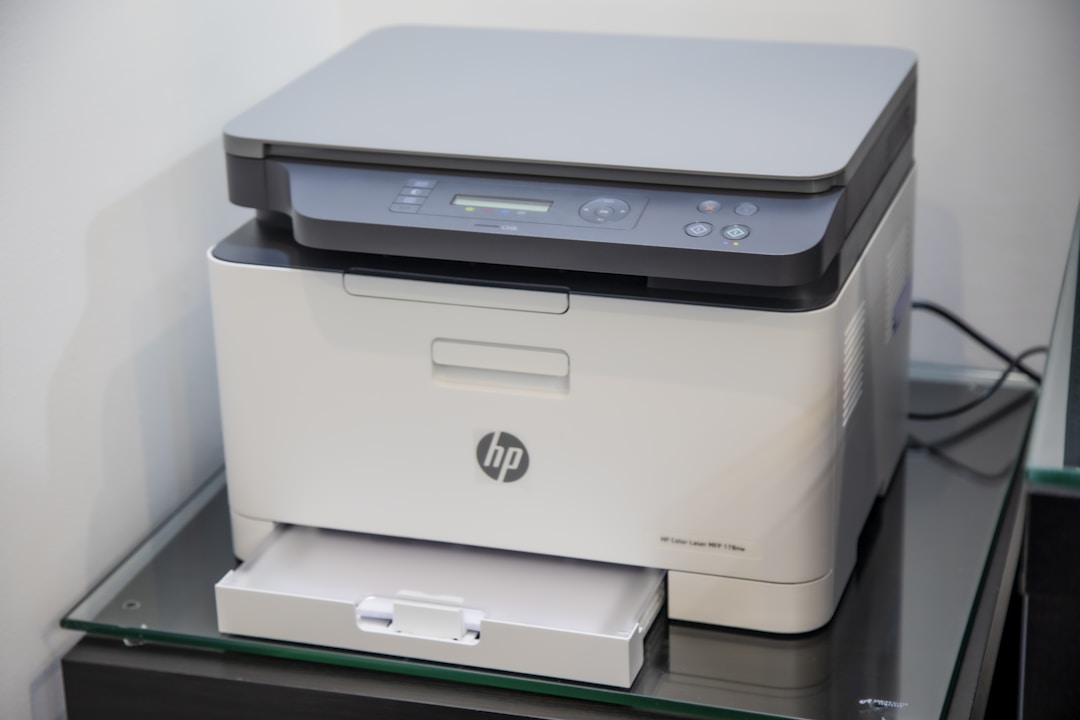
In today's digital era, ensuring security and compliance in managing patients' information is a crucial focus of healthcare organizations. But how can these organizations manage such secure communications over fax while remaining compliant with HIPAA? In this article, we'll dig deeper into the processes and procedures required to establish HIPAA compliant faxing in your healthcare institution.
Understanding HIPAA and Faxing
Alt Text: A printer with faxing capabilities sits on a glass table.
The Health Insurance Portability and Accountability Act (HIPAA) is a complex regulation that aims to safeguard patient information. It establishes the necessary security measures that healthcare organizations must implement to protect sensitive patient data, which includes its transmission through fax.
Faxes have been a reliable and ubiquitous method of communication, particularly in the healthcare sector. Despite their reconsidered 'old-school' method, they still play an integral role because they can provide hard-copy records, convenience, and immediate delivery.
However, the sensitivity of the information transmitted demands strict compliance with HIPAA. Non-compliance could lead to hefty fines and damage to the organization's reputation.
Examining the HIPAA Fax Rule
The HIPAA fax rule is a set of guidelines designed to ensure that electronic transmission of health information, specifically through faxes, is secure, encrypted, and protected from unauthorized exposure.
The main purpose of the HIPAA fax rule is to reduce the risks of unauthorized exposure, thereby safeguarding patients' confidential health information from potential misuse. It stipulates that faxed information must remain private, and protected both during and after transmission.
The HIPAA fax rule also sets the standards regarding secure faxing equipment. This includes factors such as the location of fax machines and the managerial process for the faxes received and sent.
Importance of HIPAA-Compliant Faxing
Safeguarding patient information is not only a matter of trust and reputation, it's a critical legal compliance issue in the healthcare sector. HIPAA-compliant faxing helps to reduce the risk of fines, sanctions, and reputation crises associated with breaches of sensitive patient data.
Beyond compliance, HIPAA-compliant faxing can be a strategic advantage. It assures patients that their information is safe, providing a clear demonstration of the commitment to patients' rights and privacy.
HIPAA-compliant faxing is also essential in maintaining an efficient and productive healthcare operation. By stipulating clear regulations on fax usage and data management, it helps to standardize operational procedures, reducing the possibility of errors.
Steps To Implement HIPAA-Compliant Faxing

Alt Text: A man delivers a presentation to his team.
To begin the journey of implementing HIPAA compliant faxing, one must first ensure that the necessary hardware, such as secure fax machines, is in place.
Next, you must form a clear policy on fax usage. This policy should include specific strict regulations and instructions on who can send and receive faxes, what information can be faxed, and how faxes should be properly stored and disposed of.
Once policies are established, educate staff on these policies and ensure they are adhered to. Regular training and audits of fax operations will go a long way in maintaining compliance.
Potential Risks and Solutions in HIPAA-Compliant Faxing
Despite best efforts, potential risks may occur in HIPAA-compliant faxing. These may range from unauthorized access to faxes, accidental sending of faxes to the wrong recipient, or even mishandling of faxed information.
To address risks, solutions may include a combination of technology, such as secure fax machines and encrypted fax services, and clear, well-enforced policies and staff training.
By understanding and planning for these risks, healthcare organizations can reduce the likelihood of non-compliance and data breaches, and ensure that HIPAA-compliant faxing is a secure, efficient, and effective tool for communication in healthcare.
